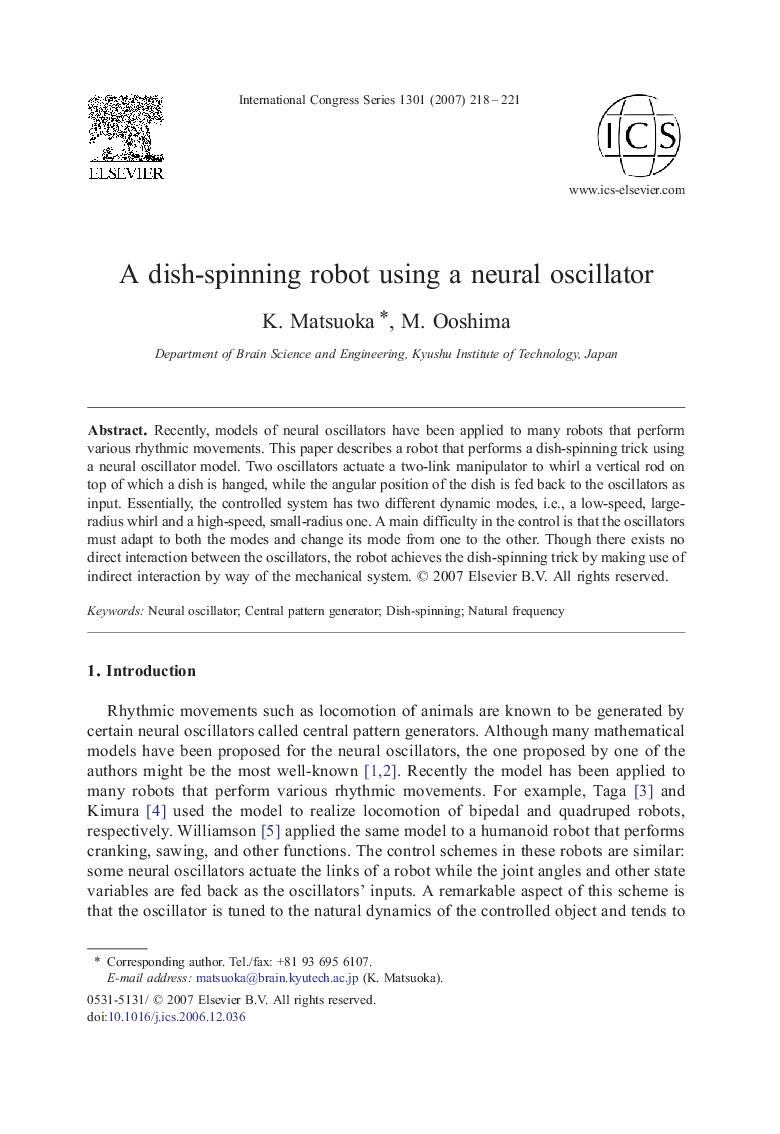| Article ID | Journal | Published Year | Pages | File Type |
|---|---|---|---|---|
| 2576520 | International Congress Series | 2007 | 4 Pages |
Recently, models of neural oscillators have been applied to many robots that perform various rhythmic movements. This paper describes a robot that performs a dish-spinning trick using a neural oscillator model. Two oscillators actuate a two-link manipulator to whirl a vertical rod on top of which a dish is hanged, while the angular position of the dish is fed back to the oscillators as input. Essentially, the controlled system has two different dynamic modes, i.e., a low-speed, large-radius whirl and a high-speed, small-radius one. A main difficulty in the control is that the oscillators must adapt to both the modes and change its mode from one to the other. Though there exists no direct interaction between the oscillators, the robot achieves the dish-spinning trick by making use of indirect interaction by way of the mechanical system.
